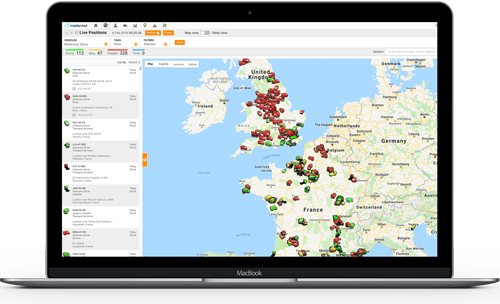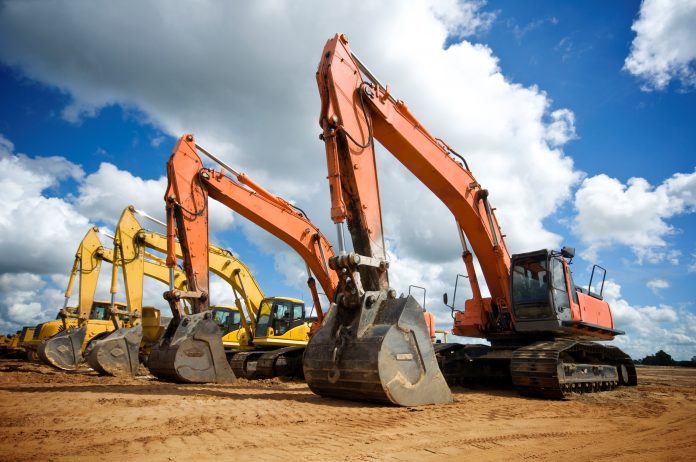Fleet and asset management specialists, Masternaut, discuss how your construction company can use fleet telematics to capture data and boost the efficiency of construction vehicles
Making sure a commercial fleet is running as efficiently as possible should be the goal of any fleet manager. In construction, this is no different. When your company relies on the transportation of workers and materials to different sites, being able to do so as efficiently as possible can produce significant benefits. One way of achieving increased efficiency across a construction fleet is by implementing fleet telematics, which allows fleet managers to individually track each vehicle within a fleet and gather data which can be used to set a multitude of goals.
Precise GPS tracking allows fleet managers to see the location of their entire fleet at any time. The advantage of this is that when delivering materials to a site or moving items from one area to another, fleet managers can quickly see which route their drivers are taking and if it is the most efficient one. For example, while in theory taking a motorway from one site to another may be faster, traffic flow may mean taking a smaller road – which could be a little longer but less busy – would be the more efficient option.
Historical data from previous journeys could indicate times and areas where congestion is high, and managers can then advise their drivers to take different, more efficient, routes. This, for an industry such as construction, can be incredibly valuable as it can not only save money on fuel usage but can also save time. The saying ‘time is money’ is true in all industries and for construction company’s even more so. Delays in materials arriving at sites could lead to longer delays in work which, in turn, can result in higher costs for all involved.
Another key area in which telematics can improve the efficiency of construction vehicles is through driver behaviour. When implementing telematics systems, you can also install in-cab coaching systems that will provide instant feedback to drivers about their behaviour behind the wheel.
These systems provide audio and visual feedback to drivers to alert them about actions which contribute to heavy fuel usage such as harsh acceleration, braking, speeding and idling. These small, dashboard mounted devices include a traffic light system which instantly shows the driver how efficient, or how wasteful, their driving style is. These devices are also connected to a telematics device (installed behind the dashboard) which collect this data and transfer it back to the business for further analysis. By viewing this data on fleet tracking software and mobile applications remotely, fleet managers can make informed decisions based on accurate data that lead to significant improvements on fuel spend, road safety and fleet sustainability.
One construction company which implemented such a system was Graham Construction, a privately owned company operating in the UK and Ireland. Graham’s Business Manager, Karl Teggarty, said the company “were able to reduce fuel costs in the first four months of use by 11%.
“We believe 6% of this was down to quick wins such as eradicating unwarranted idling and encouraging drivers to make more efficient route choices.
“The remaining 5% being due to improved driving technique following individual driver guidance and training generated from the data.”

Training is an important point and an essential aspect of improving efficiency. While drivers can improve their own behaviour based on feedback from the in-cab systems, some find it more beneficial to receive specific training to improve driving efficiency. Telematics allows fleet managers to identify drivers who could benefit from further training and – by analysing the data produced from the tracking systems – design training programs to target specific areas of driving.
It is also worth noting that while feedback and training to improve driver behaviour has primarily been used to improve fuel efficiency, it also impacts driver safety. Reducing the number of times a driver; speeds, brakes harshly, accelerates too quickly or corners too steeply improves the safety of not just the driver but all other road users. With construction companies utilising the advertising space on the side of their vehicles, having drivers who demonstrate good road safety and are respectful to other road users could be beneficial in attracting new customers.
Finally, telematics allows fleet managers to track the maintenance of vehicles better and analyse which vehicles require maintenance and when. This means vehicles are running as efficiently as possible while they are out on the road. Furthermore, vehicles do not need to be taken off the road as often for unscheduled maintenance as fleet managers are better able to track the history of individual vehicles. In-cab coaching can help in this area as a reduction in harsh actions such as breaking, reduces the wear on parts such as brake disks and pads and can save companies money in reduced maintenance costs.
Obviously unforeseen issues can never be eradicated entirely from any commercial fleet. However, in an industry such as construction where companies need vehicles running at all times to transport workers and materials, any way to keep as many vehicles on the road is a positive.
Telematics has been proven to improve fleet efficiency in a wide variety of business sectors. In addition to savings on fuel and improvements in safety and efficiency, the environmental impact from reduced fuel usage, across an entire fleet can be significant in the long-term. In order to track long-term fuel savings, telematics data can be used as the basis of a sustainability plan which can be implemented company-wide. Sustainability plans can be wider ranging than just fuel but when looking at fuel usage the plans produced can factor in the environmental savings of reduced fuel usage and even the possibility of transitioning to electric vehicles in the future.
Karl Teggarty from Graham said vehicle tracking allowed them “to understand which vehicles were using the most fuel. This, in turn, helped us to enhance the performance of our existing vehicles and where needed, adopt more economical driving styles.”
Masternaut
Twitter: @masternaut
LinkedIn: Masternaut














